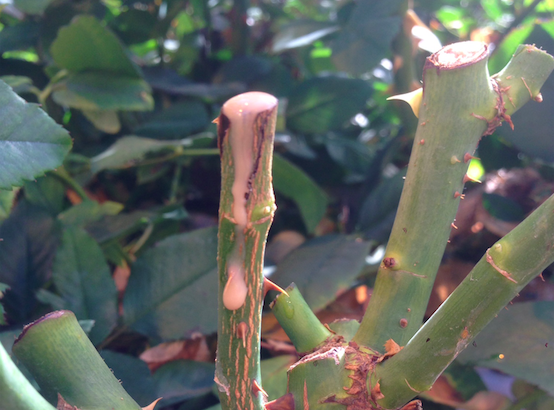The Netherlands Food and Consumer Product Safety Authority (NVWA) has found brown rot (Ralstonia solanacearum) for the second time this year. It concerns two cut-rose nurseries this time, albeit for one of those companies the official status for now is that the infection is suspected. The crops are of the same cultivar in which brown rot was detected earlier this year.
By Hans Neefjes
NVWA discovered the infection as part of their trace-back and trace-forward investigation, which they started after they’d established a rose company was infected with ralstonia, in March 2018. The investigation was focused on the cultivar that this particular company was growing.

NVWA inspected seven companies. They’ve found the Q-bank listed Ralstonia solanacearum at two of those companies. It isn’t clear yet, whether there’s any genetic relationship with the strain found in rose so far. Investigations into the so-called phylotype are still ongoing.
Not the entire nursery
The case of March 2018 concerned an entire, more than 2-ha large nursery. This time, it regards some smaller sections at two different nurseries. NVWA can’t give an exact acreage, but they did share that these nurseries hadn’t been infected with ralstonia before.
It’s only the infected crops that have to be destroyed, but the entire nursery is on lockdown from the moment a crop is given pending-plus status. ‘Phytosanitary-responsible transport’ then applies to all roses that are harvested, which means they need to be transported in closed refuse containers.
The company’s roses can only be traded again when the definitive test results are in. Pending-plus status means it’s very likely that a sample is infected. The third, and last, phase of the investigation ends with the definitive conclusion as to whether the sample is or isn’t infected. That third phase usually takes about two weeks. It normally takes 4-5 weeks for the sample to go through all three phases.
Once again
One of the two companies is still waiting for the final test results. The infection is currently suspected at their nursery. At both companies, the concerned crops were relatively young, grown from cuttings that were infected with brown rot. So far, ralstonia in cut roses has only been found in young plantings. The first time it was found in the Netherlands, was in 2015.
NVWA hasn’t increased the number of inspections into ralstonia in rose, but they do inspect the companies that come up as part of their trace-back and trace-forward investigations, when they try to locate the source of the infection.
The organisation hasn’t heard about outbreaks of ralstonia in rose in any of the countries surrounding the Netherlands. NVWA is in contact with other EU countries regarding the outbreaks in 2018 and the subsequent investigations. A notification about the supply of the relevant cultivar to other EU countries has also been sent out.









